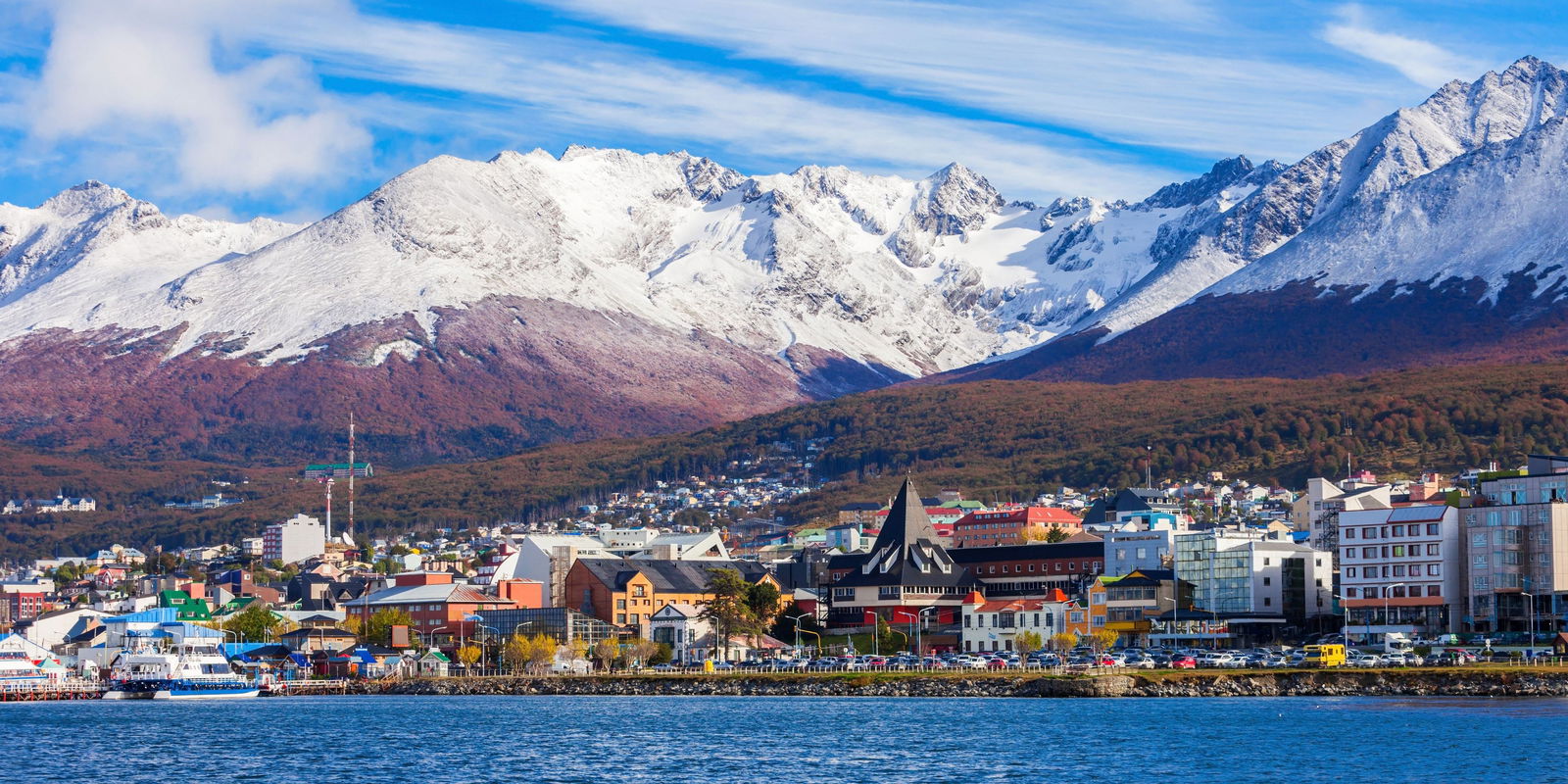


Ushuaia, often called “The End of the World,” is the southernmost city on Earth—where the Andes meet the sea and Patagonia turns wild. Nestled between snowcapped mountains and the Beagle Channel, it’s a stunning departure point for Antarctic adventures and a bucket-list destination for nature lovers.
Ushuaia is more than just the end of the map—it’s the beginning of a truly epic adventure. With rugged beauty, rich history, and a gateway to the ends of the Earth, it’s a destination that captures the imagination and rewards those willing to journey south.
Explore dramatic landscapes of forests, rivers, glaciers, and lakes at the southern tip of South America. Hike scenic trails, ride the “End of the World Train,” and take in untouched Patagonian wilderness just a short drive from town.
Hop on a boat tour through the legendary Beagle Channel to spot sea lions, Magellanic penguins, and cormorants. Most cruises also pass the iconic Les Éclaireurs Lighthouse, often mistaken for the “Lighthouse at the End of the World.”
Take a short hike or chairlift up to Martial Glacier for sweeping views of Ushuaia, the Beagle Channel, and surrounding peaks. In winter, it’s also a popular spot for skiing and snowshoeing.
Take a guided boat or walking tour to Isla Martillo, home to colonies of Magellanic and Gentoo penguins. During certain months, you may even spot a few king penguins mingling with the crowd.
Ushuaia is the main departure point for cruises to Antarctica. Whether you're heading to the White Continent or just soaking up the atmosphere of exploration, the city’s frontier energy is unmistakable.

Summer is peak season in Ushuaia, with mild temperatures ranging from 40°F to 60°F (4°C to 16°C) and up to 17 hours of daylight. It’s the ideal time for hiking, boating, and wildlife viewing, with trails open in Tierra del Fuego National Park and cruises departing for penguin colonies and nearby glaciers. The weather is unpredictable but generally more stable, and the long days allow for extended exploration of the region’s lakes, forests, and coastline.

Autumn brings cooler temperatures—typically 35°F to 50°F (2°C to 10°C)—and a brilliant display of fall colors. The forests of lenga and ñire trees turn vivid shades of red, orange, and yellow, making this one of the most visually stunning times to visit. Tourist crowds begin to thin, but many outdoor activities are still possible, including hiking and scenic drives through the Fuegian landscape

Winter transforms Ushuaia into a snow-covered wonderland, with temperatures ranging from 25°F to 40°F (-4°C to 4°C). The city becomes Argentina’s southernmost ski destination, with Cerro Castor offering downhill skiing, snowboarding, and cross-country trails just outside of town. Snowshoeing, dog sledding, and ice trekking are also popular winter activities. While daylight hours are shorter (around 7–8 hours), the city remains lively and charming, and the wintery landscape adds to its mystique.

Spring is a transitional season in Ushuaia, with temperatures rising from 30°F to 50°F (-1°C to 10°C) and the landscape beginning to awaken. Snow gradually melts from the lower elevations, and migratory birds return to the region. This season is quieter than summer, but days are lengthening, and outdoor activities become more accessible. Spring flowers begin to bloom, and boat tours on the Beagle Channel resume more frequently, offering views of sea lions, cormorants, and possibly whales.
